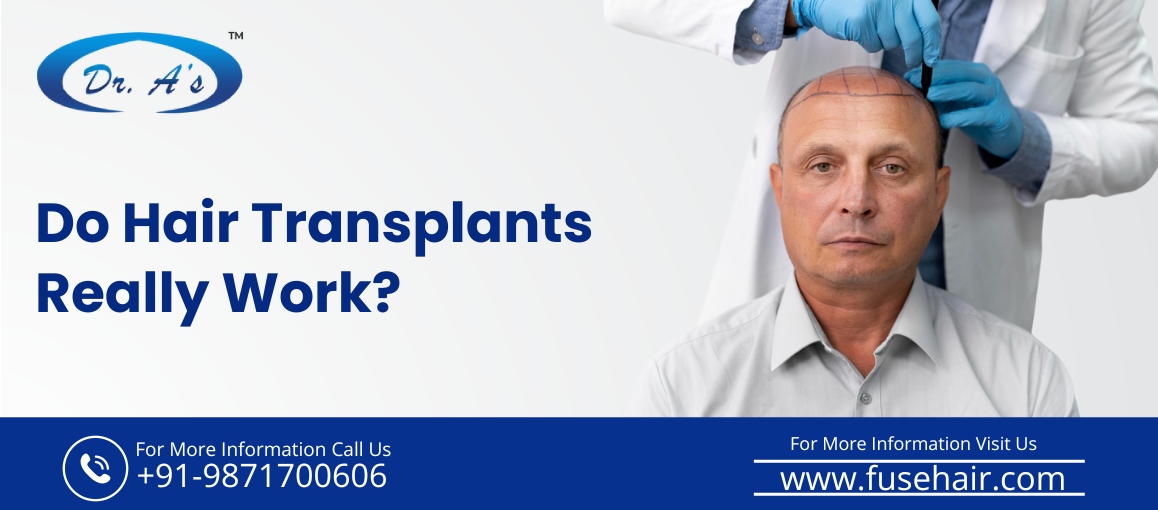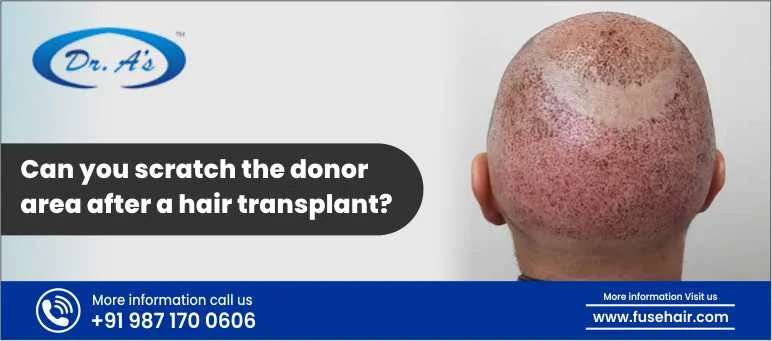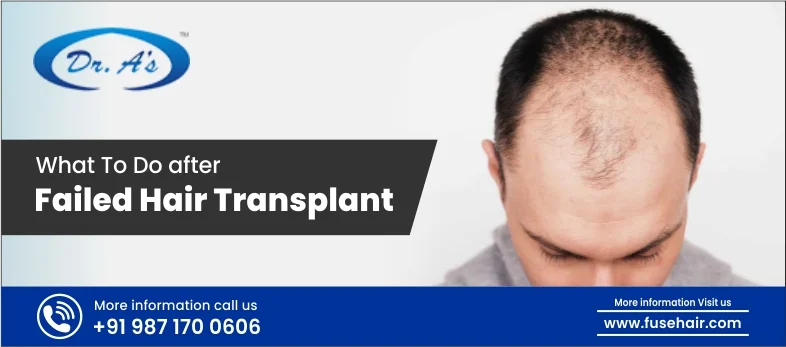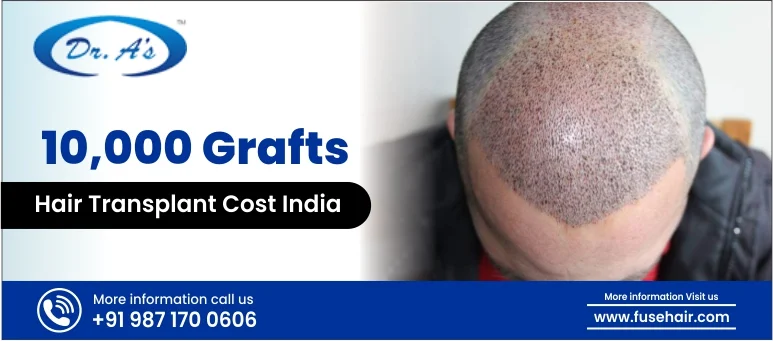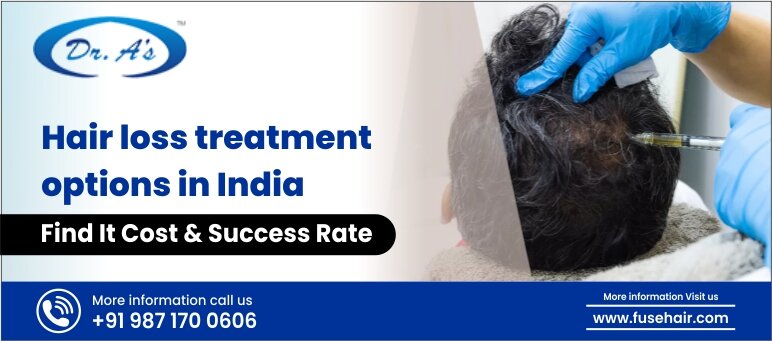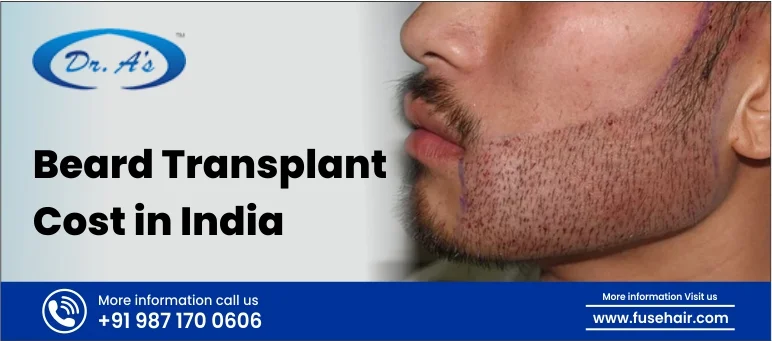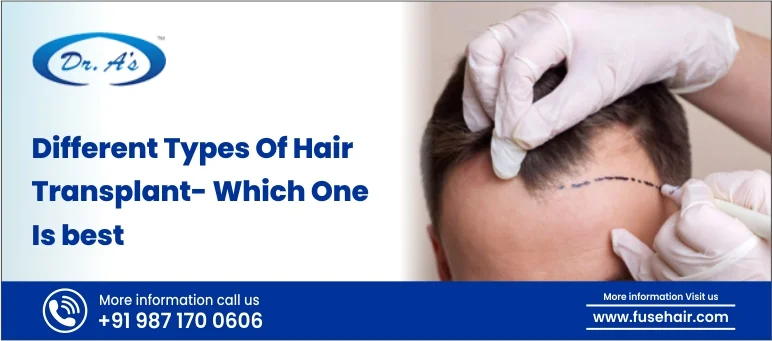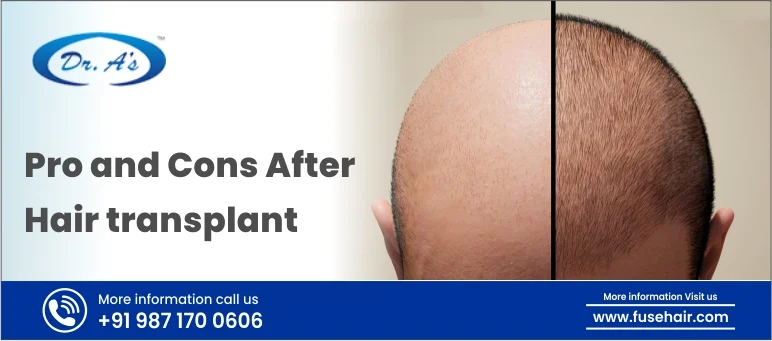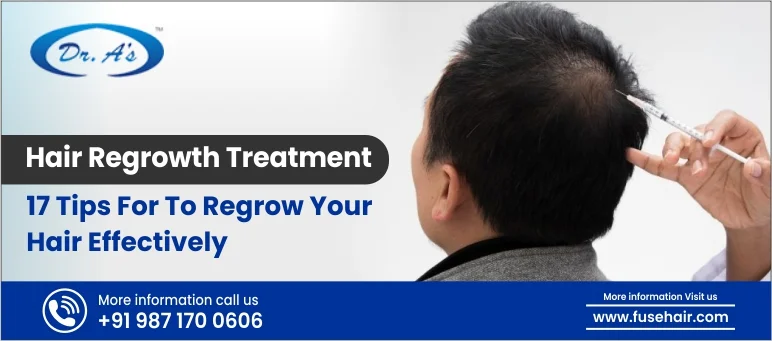
If you’re considering undergoing a hair transplant procedure to address your hair loss concerns, understanding the hair transplant results is crucial. This knowledge empowers you to embark on your hair restoration journey with confidence, ensuring the best possible hair transplant result
A hair transplant is a surgical procedure aimed at addressing hair loss or baldness. It involves surgically extracting hair follicles from a designated donor area with abundant hair growth. These healthy follicles are then meticulously implanted into the recipient area experiencing hair thinning or loss. The ultimate objective of a hair transplant is to redistribute viable hair follicles to achieve natural-looking hair restoration.
Hair transplantation can be a life-changing solution, providing natural-looking results and boosting self-confidence. However, numerous factors can influence the hair transplant results, making it essential to be aware of these considerations. By exploring the key factors that affect the results of a hair transplant before and afterthe procedure, you can make informed decisions, set realistic expectations, and collaborate effectively with your surgeon.
11 Key Factors Affecting Hair Transplant Results
The hair transplant results vary on different crucial factors. Learn about these factors properly to achieve the best possible outcome.
| 11 Key Factors Affecting Hair Transplant Results |
|---|
|
Surgeon’s Skill and Experience
The skill and experience of the surgeon are paramount when it comes to the success of a hair transplant procedure. The skill and experience of the surgeon are paramount when it comes to hair transplant results.
A highly skilled surgeon possesses the technical expertise required for performing donor hair extraction, recipient site creation, and graft placement with precision. You can check out their hair transplant before and after images of previous patients to analyze the surgeon’s ability to render natural-looking results.
One of the renowned hair transplant surgeons, Dr. Arvind Poswal, the “Father of Hair Transplants in India,” is an experienced surgeon who has performed numerous hair transplants and developed a deep understanding of the intricacies involved in the process.
Technique Used
The technique employed during a hair transplant plays a crucial role in determining the procedure’s outcome. The two commonly used methods at Dr. A’s Clinic are follicular unit transplantation (FUT) and follicular unit extraction (FUE), each with its unique characteristics and considerations.
The surgeon’s expertise and experience with the chosen technique are critical for achieving successful results. A skilled surgeon is proficient in performing both FUT and FUE and can determine the most suitable method for each patient based on factors such as hair loss pattern, donor hair characteristics, and the desired outcome. They can assess the patient’s specific needs and recommend the technique that will yield the best hair transplant results.
Furthermore, the surgeon’s expertise extends to the execution of the chosen technique. They deeply understand the intricate steps involved, including the precise extraction or dissection of grafts and their subsequent placement in the recipient area. The surgeon’s proficiency in handling the grafts and ensuring their viability during transplantation significantly impacts the procedure’s success.
Besides, we use only FDA-approved equipment and the latest technology to perform FUE and FUT surgeries for the best hair transplant results.
Donor Hair Quality and Supply
The quality and supply of donor hair are significant factors that may affect the hair transplant results. The quality of the donor hair, including its thickness, texture, and color, plays a crucial role in achieving a natural-looking result.
Considering these factors, the surgeon plans the hair transplant procedure, considering the size of the recipient area, desired density and coverage, and the limitations imposed by the available donor hair supply.
In cases where the individual has limited donor hair, alternative options may be discussed, and realistic expectations are set regarding the achievable extent of coverage. This may involve considering alternative donor areas or exploring additional treatments to optimize the available donor hair.
The surgeon’s expertise in evaluating donor hair quality and supply is crucial for maximizing the use of available hair follicles and achieving the best possible results. Selecting grafts with optimal characteristics and planning the procedure accordingly enhances the chances of successful hair growth and a natural-looking outcome.
Genetic Factors
Genetic variables greatly influence the outcome of a hair transplant before and after the surgery. Natural hair qualities inherited from one’s parents, including thickness, texture, and growth pattern, are controlled by that person’s genetic makeup. These hereditary variables directly affect how well the hair transplant operation works out in the end.
While a hair transplant can restore hair to areas affected by hair loss, it cannot fundamentally alter the underlying genetic traits that determine hair thickness, texture, and growth pattern.
Genetic variables significantly impact a hair transplant’s results. The genetic composition a person inherits from their parents determines inherited characteristics of their natural hair, such as thickness, texture, and growth pattern. These hereditary variables directly impact the final result of the hair transplant process.
Recipient Site Preparation
The creation of recipient sites where the transplanted hair follicles are placed is a critical and meticulous step in the hair transplant process. The surgeon’s careful planning and attention to detail during this stage greatly influence the final hair transplant result.
One of the key considerations in recipient site creation is the design of the hairline. The surgeon considers several factors, including facial symmetry, age appropriateness, and individual preferences, different angles, depending on the area of the scalp.
Therefore, the surgeon replicates these natural patterns by angling the transplanted hair follicles accordingly. This meticulous approach ensures that the transplanted hair blends seamlessly with the existing hair, resulting in a cohesive and aesthetically pleasing appearance.
The surgeon maintains a balance between artistic judgment and technical precision throughout the recipient site creation process. They combine their expertise in hair transplantation techniques with an understanding of facial aesthetics to create recipient sites that are tailored to each patient’s unique features and desired outcomes.
By meticulously planning the hairline design, considering factors such as facial symmetry and individual preferences, and carefully determining the angle and density of graft placement, the surgeon aims to perform an effective hair transplant surgery that restores hair and enhances the patient’s overall appearance.
Graft Survival
The survival rate of transplanted hair grafts is crucial for a hair transplant procedure’s overall success and longevity. Skilled surgeons understand the importance of meticulous techniques to minimize graft trauma and ensure optimal graft survival.
During the extraction phase, the surgeon carefully harvests the donor grafts, preserving their integrity. They use specialized tools and techniques to minimize any damage or trauma to the grafts during the extraction process. By employing precision and expertise, they can extract the grafts with minimal transection or disruption to the hair follicles, resulting in positive outcomes.
The surgeon then meticulously places the grafts into the recipient sites. They pay close attention to the angle, depth, and positioning of each graft to ensure optimal growth and integration. By using precise techniques, they minimize graft trauma and maximize their survival chances.
By handling and placing the grafts with care, skilled surgeons enhance the chances of long-term hair growth and achieve the best hair transplant results for their patients. These successful outcomes demonstrate the effectiveness of meticulous techniques and highlight the transformative potential of a well-executed hair transplant procedure.
Healing and Postoperative Care
The healing process and postoperative care are vital aspects that greatly impact the outcome of a hair transplant procedure. Following the surgeon’s instructions for postoperative care ensures proper healing and optimal growth of the transplanted hair grafts.
In addition to medications, following a recommended hair care routine is crucial during the postoperative period. Patients are often advised to gently wash their hair using a mild shampoo and avoid harsh chemicals or excessive heat styling. The surgeon may provide specific instructions on handling and caring for the transplanted hair grafts to promote their growth and prevent damage.
Regular follow-ups with the surgeon are also important to monitor the progress of healing and assess the hair transplant result month by month. During these appointments, Dr. Arvind Poswal usually provides effective guidance on postoperative care and addresses any concerns or questions that the patient may have.
Patient Characteristics
The pattern of hair loss, such as receding hairline, thinning crown, or overall hair thinning, influences the design and extent of the hair transplant procedure. The surgeon considers the specific areas of hair loss and plans the transplant accordingly.
Hair characteristics, including curliness, thickness, and texture, significantly affect hair transplant before and after results for various patients. For instance, curly or coarse hair can provide better coverage and a fuller appearance. The surgeon evaluates these characteristics to determine the appropriate graft size, placement, and angulation for natural-looking results.
During the initial consultation, the surgeon thoroughly evaluates and discusses these individual factors with the patient. This assessment helps manage expectations appropriately and tailor the treatment plan to meet the patient’s unique circumstances. Considering these factors, the surgeon can determine the most suitable approach, set realistic goals, and maximize the chances of achieving satisfactory results.
Expectations and Goals
A successful hair transplant treatment depends on the patient and physician having reasonable expectations and communicating well. It is critical for patients to grasp what is achievable realistically and to match their expectations with the likely reality.
Open and transparent communication helps both parties establish a shared understanding of achievable outcomes and any potential risks involved.
By addressing the patient’s concerns and providing realistic insights, the surgeon helps them form realistic expectations and make informed decisions. This collaborative approach enhances patient satisfaction and increases the chances of successful results.
Pre-Existing Hair Loss Progression
The progression of pre-existing hair loss can influence the hair transplant result. Hair loss typically advances gradually, leading to worsening thinning or balding over time.
The success of a hair transplant relies on the use of healthy hair follicles from the donor area and their transplantation to the recipient area. However, if the recipient area continues to experience ongoing hair loss and thinning post-transplant.
During the consultation process, the surgeon will conduct a thorough evaluation of the extent and pattern of hair loss. They will take into account factors such as the individual’s age, the rate of hair loss, and the likelihood of future hair loss progression.
This may involve strategically placing the transplanted hair to create a natural-looking pattern capable of accommodating future hair loss.
Lifestyle Factors
Lifestyle factors play a crucial role in achieving the desired hair transplant result after 3 months. Habits such as smoking, excessive alcohol consumption, poor nutrition, and high levels of stress can have significant implications for the healing process and the overall health of the hair.
Smoking and Excessive alcohol consumption constrict blood vessels, reducing blood flow to the scalp. This diminished blood circulation hinders the delivery of essential nutrients to the hair follicles, compromising their growth and vitality.
Based on this evaluation, the surgeon may create a thorough treatment strategy that takes into account both the current hair loss and projected future hair loss.
High levels of stress can also have a detrimental impact on the success of hair transplantation. Stress weakens the immune system and impairs the body’s ability to heal effectively, prolonging hair transplantation’s recovery process.
Conclusion
Understanding the factors that affect hair transplant results is crucial for individuals to increase their chances of achieving successful and natural-looking hair restoration. Collaboration with a qualified surgeon and setting realistic goals are vital for a positive outcome in the hair transplant journey.
So, visit the best hair transplant clinic in Delhi, Dr. A’s Clinic, to get the best possible solution that suits your conditions and restores your lost hair. Led by Dr. Arvind Poswal and his team, we take pride in maintaining the quality of hair transplant services at its excellence. By undergoing transplantation surgeries under the supervision of Dr. Arvind Poswal, you can notice a striking difference between hair transplant before and after results.























